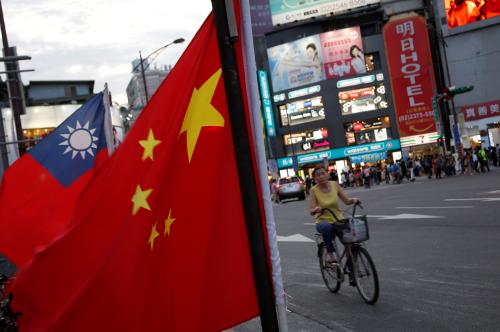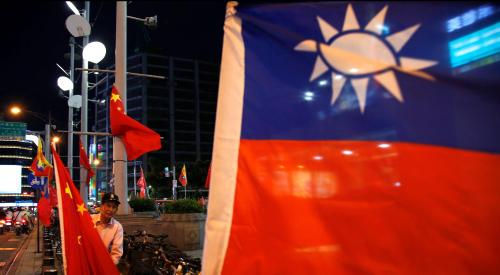When then-President-Elect Donald Trump took a congratulatory phone call from Taiwan’s president Tsai Ing-wen in December 2016, it was the first time to anyone’s knowledge that a U.S. president or president-elect had spoken to his counterpart in Taiwan. Questions quickly arose whether Trump had violated the One-China policy governing U.S. relations with China and Taiwan. In a new report, excerpted below, Richard Bush explains the nuance of that policy.
The One-China policy of the United States is not the same thing as the One-China principle of the People’s Republic of China (PRC). The One-China policy contains more elements, such as the U.S. interest in a peaceful process of cross-Strait dispute resolution, and its differing interpretation of Taiwan’s legal status as compared to Beijing’s interpretation.
Today, the U.S. One-China policy is a distillation from key documents such as the three U.S.-China joint communiqués and the Taiwan Relations Act (TRA), and a series of policy statements made over the years, such as the “six assurances.”
The United States had a One-China policy from 1900 to 1949 that was a response to the fragmentation of China into multiple power centers. Since 1949, the U.S. One-China policy has addressed the existence of two rival governments: the PRC in Beijing and the Republic of China (ROC) in Taipei. During the Cold War, Washington was forced to choose between the two governments, because each side rejected any idea that the United States could have diplomatic relations with both. Washington maintained diplomatic relations with Taipei until 1979, when it switched to Beijing. The PRC still imposes its forced choice on Washington.
At the time that the Carter administration established diplomatic relations with the PRC in 1979, it pledged to have unofficial relations with Taiwan. It created an organization—the American Institute in Taiwan (AIT)—that was nongovernmental in its legal form, but carried out the substance of U.S. government policy in relations with Taiwan. More generally, Washington has found “workarounds” to the limitations imposed by unofficial relations.
The United States takes no position on the substance of a solution to the differences that divide Beijing and Taipei, whether it be the unification of Taiwan with China or any other scenario. But it does oppose either side unilaterally changing the status quo, and has consistently stated its “abiding interest” in a peaceful resolution of cross-Strait differences. More recently, Washington has stated that any solution should have “the assent of the people of Taiwan.”
Since 1979, there is at least an implicit linkage between Washington’s implementation of the One-China policy, including unofficial ties with Taiwan, and Beijing’s stated preference for a peaceful resolution of differences with Taiwan. The linkage also goes the other way: If Beijing chooses to use force against Taiwan, it would likely trigger a sharp deterioration in U.S.-PRC relations.
Recommendations: Dos and don’ts for the Trump administration
- DO NOT state as the position of the U.S. government that Taiwan is a part of China.
- DO NOT use the phrase “One-China principle” (the PRC term). Instead, continue the practice of referring to “our One-China policy.”
- DO NOT take a position on the merits of one country, two systems as a substantive formula for resolving the Taiwan Strait dispute.
- DO continue to restate the “abiding interest” of the United States in a resolution of the dispute that is peaceful and acceptable to the people of Taiwan.
- DO urge both Beijing and Taipei to conduct cross-Strait relations with flexibility, patience, creativity, and restraint.
- DO emphasize to Beijing that the principal obstacle to its achieving its goal of unification is not U.S. arms sales to Taiwan, but the opposition of the Taiwan public to its unification formula.
- DO continue to provide weaponry to Taiwan that is tailored to meet the existing and likely future threat from the PRC.
- DO continue interactions with Taiwan’s defense establishment on how to strengthen deterrence.
- DO deepen our substantive interaction with Taiwan on bilateral issues.
- DO work with Taiwan to find ways to enhance its international role and participation in international governmental institutions where it is not a member.
- If it is in the U.S. interests to take steps to improve bilateral relations with Taiwan, DO NOT implement those changes in ways that create a public challenge to Beijing.
- DO consult in advance with leaders of Taiwan on any changes in U.S. policy toward the island—either positive or negative—before making them. Taiwan’s leaders are the best judges of whether those steps will serve their interests.





Commentary
To respect the One-China policy, here’s what the Trump administration should and shouldn’t do
April 3, 2017